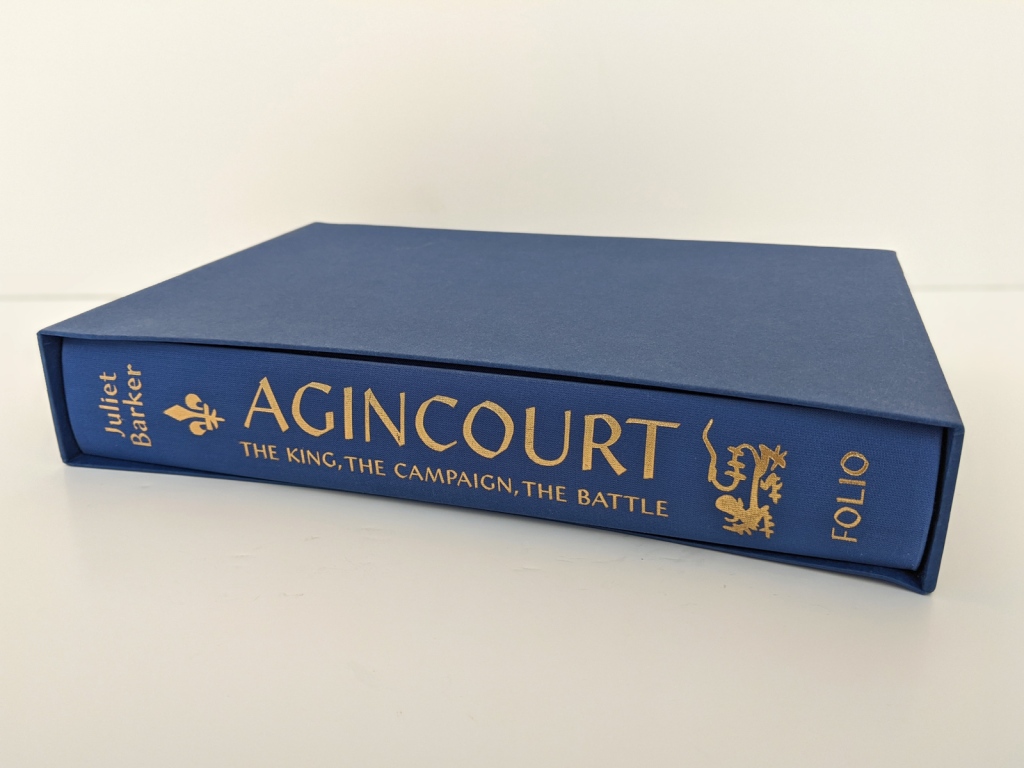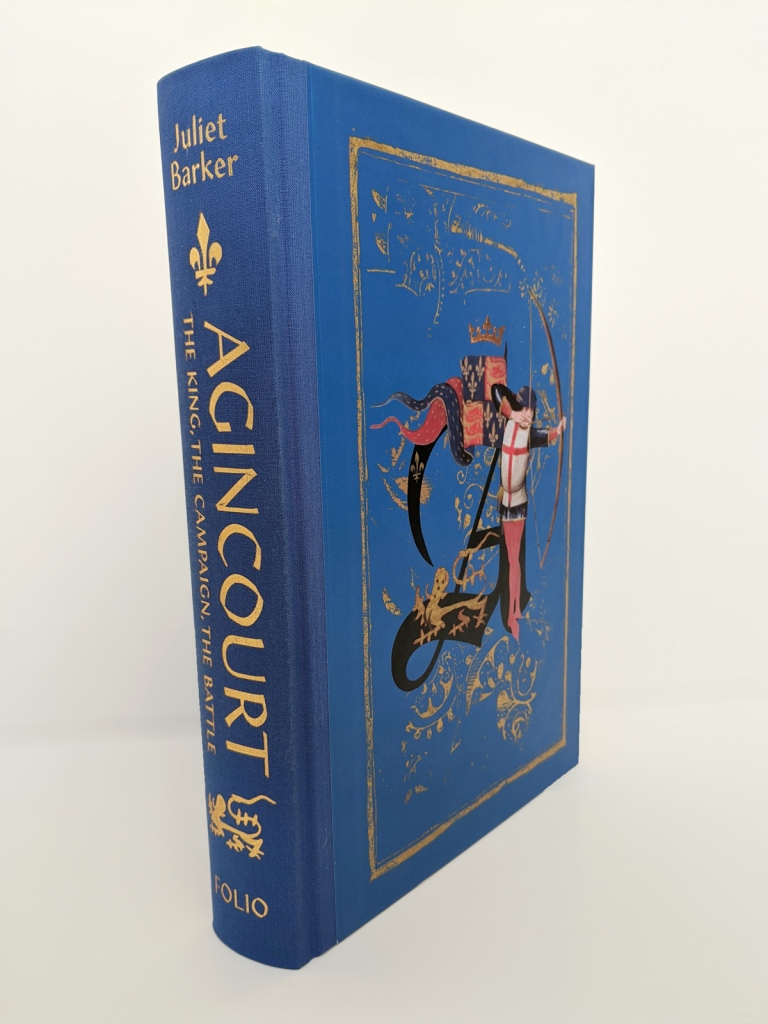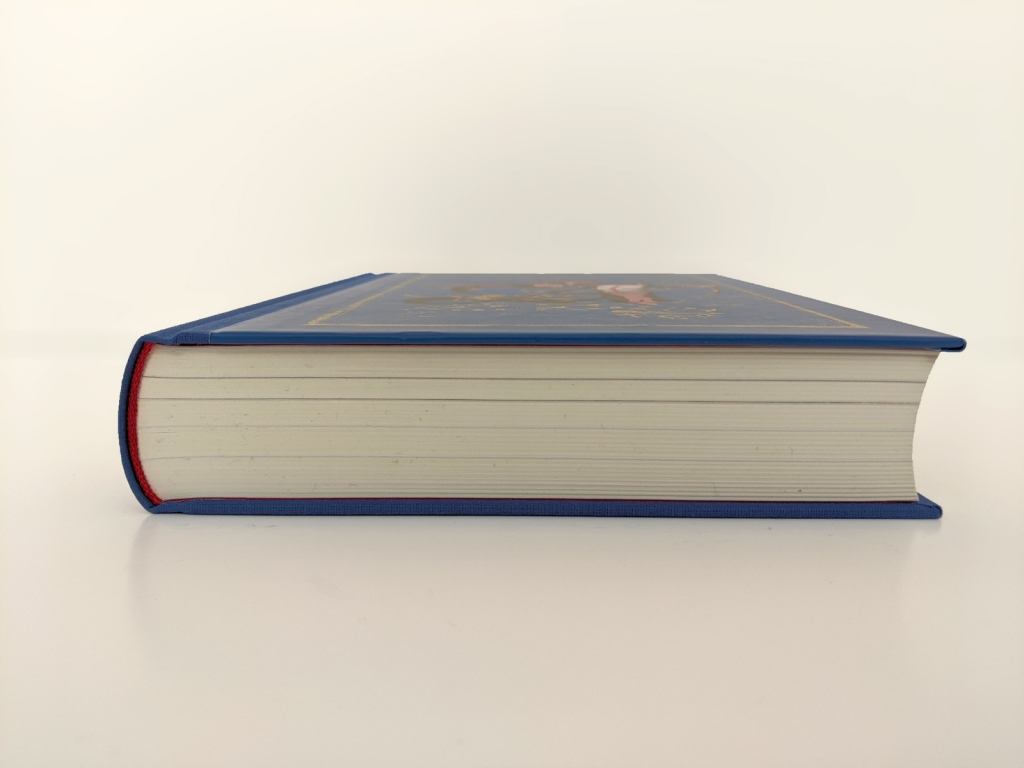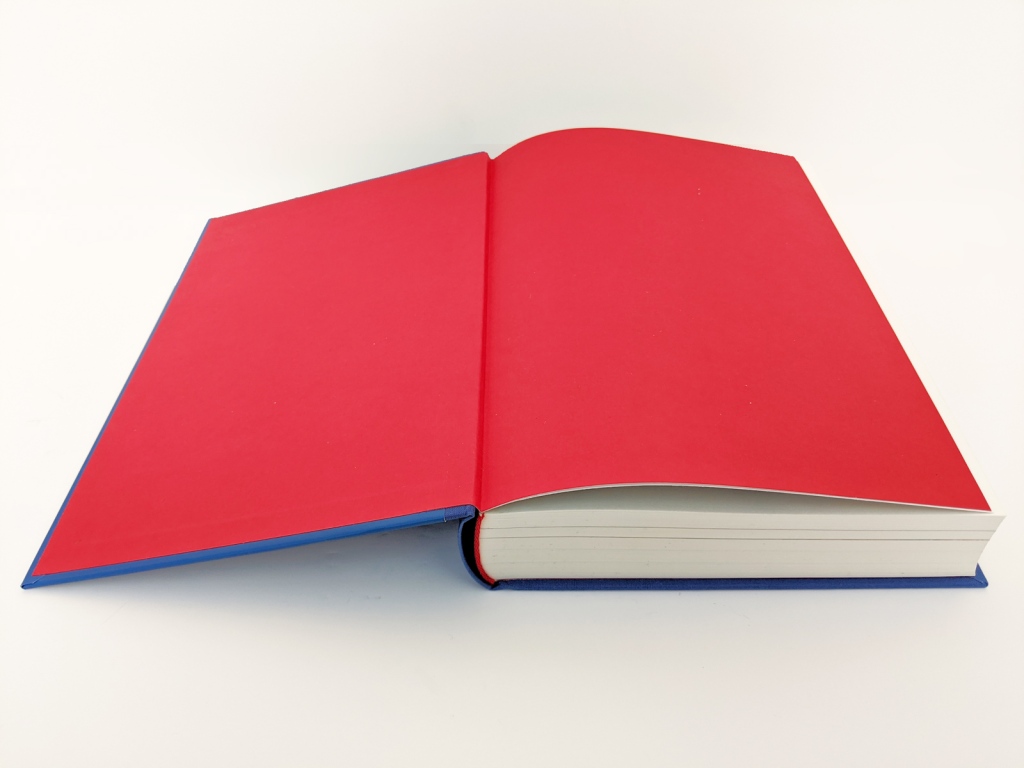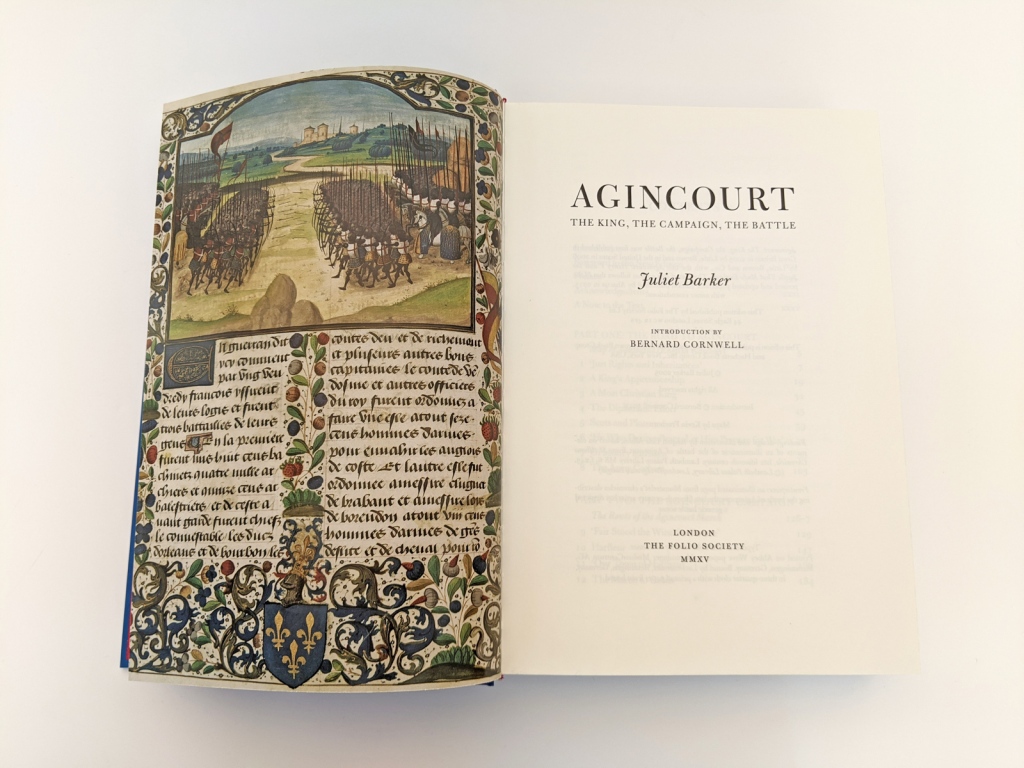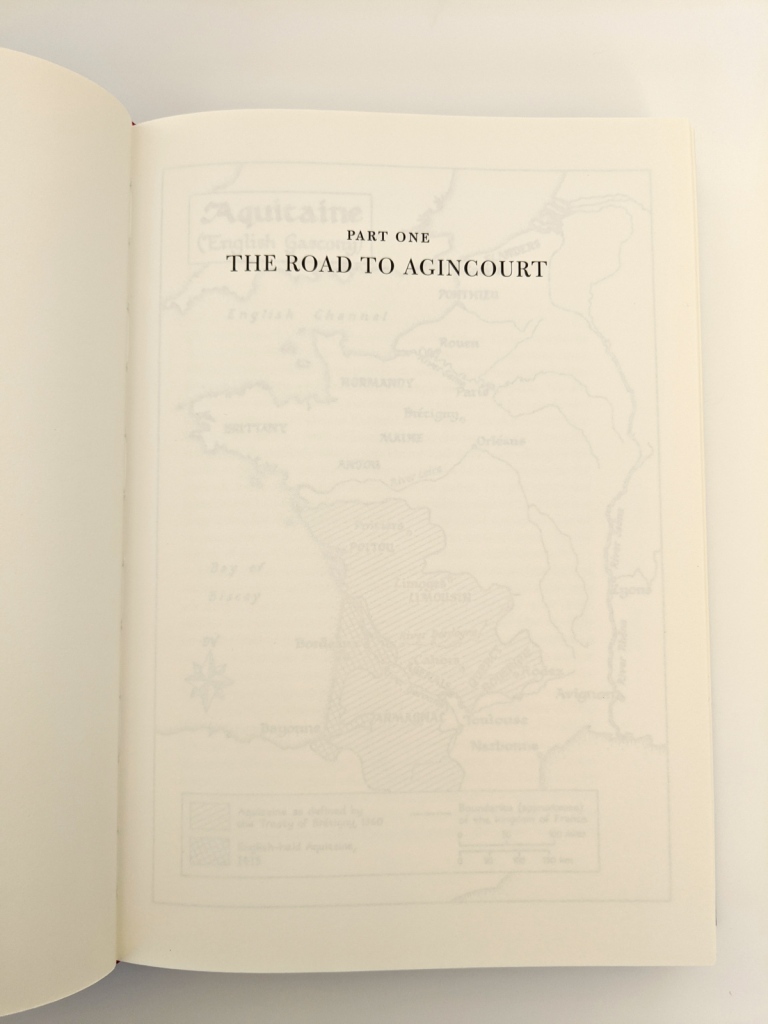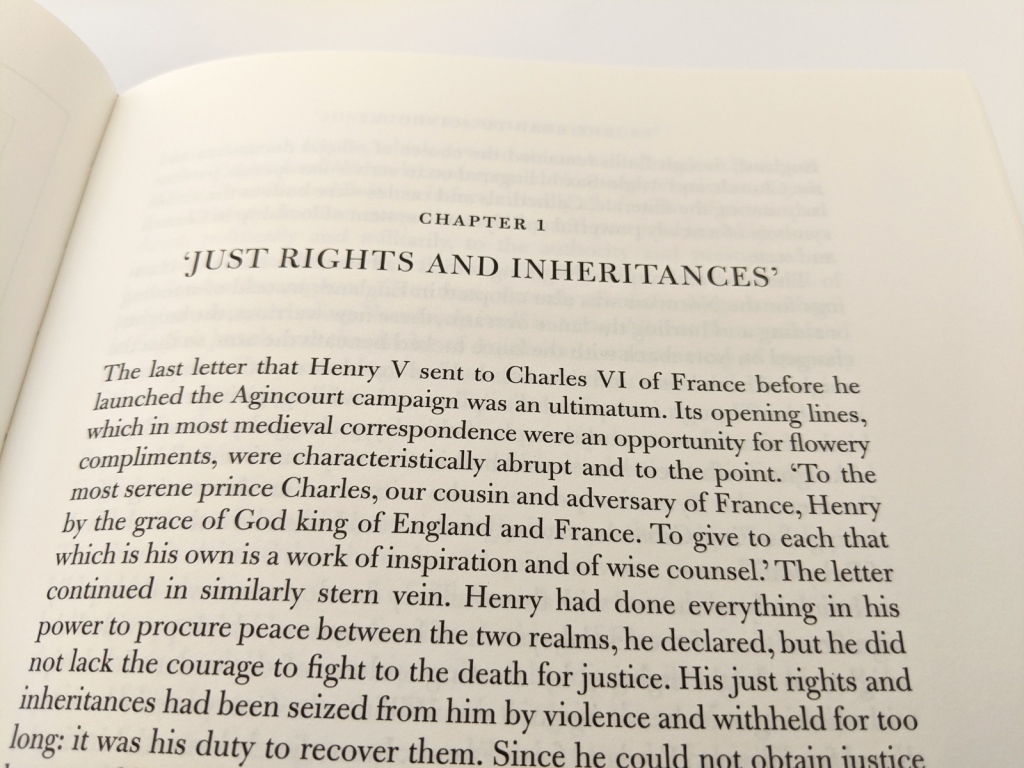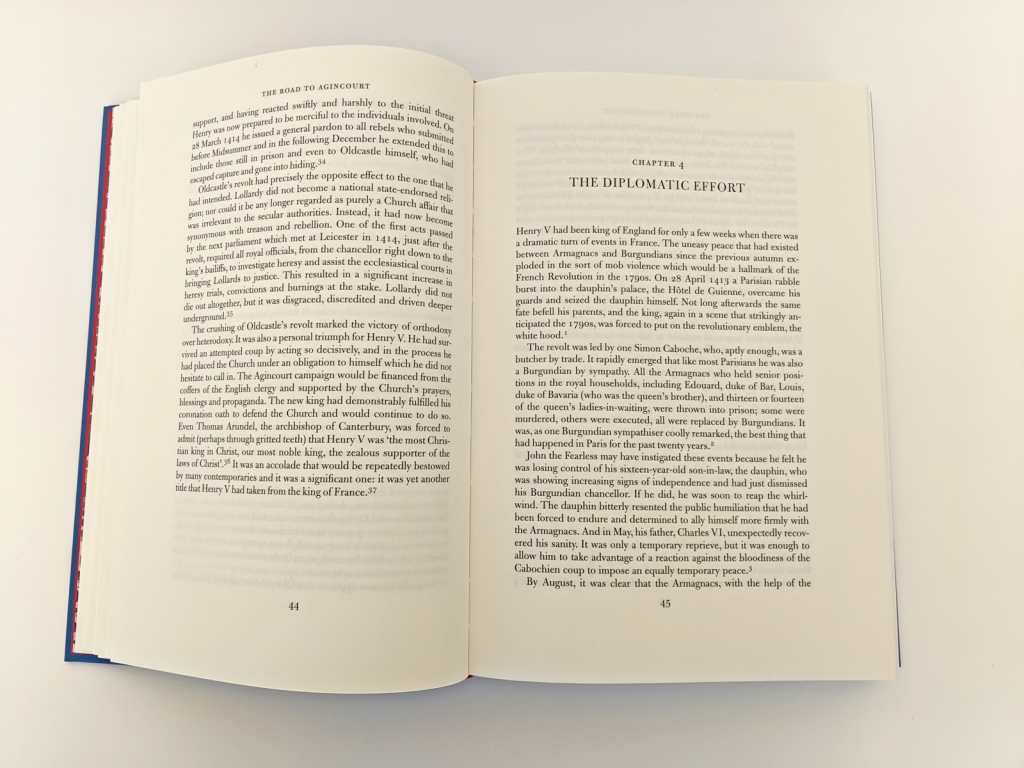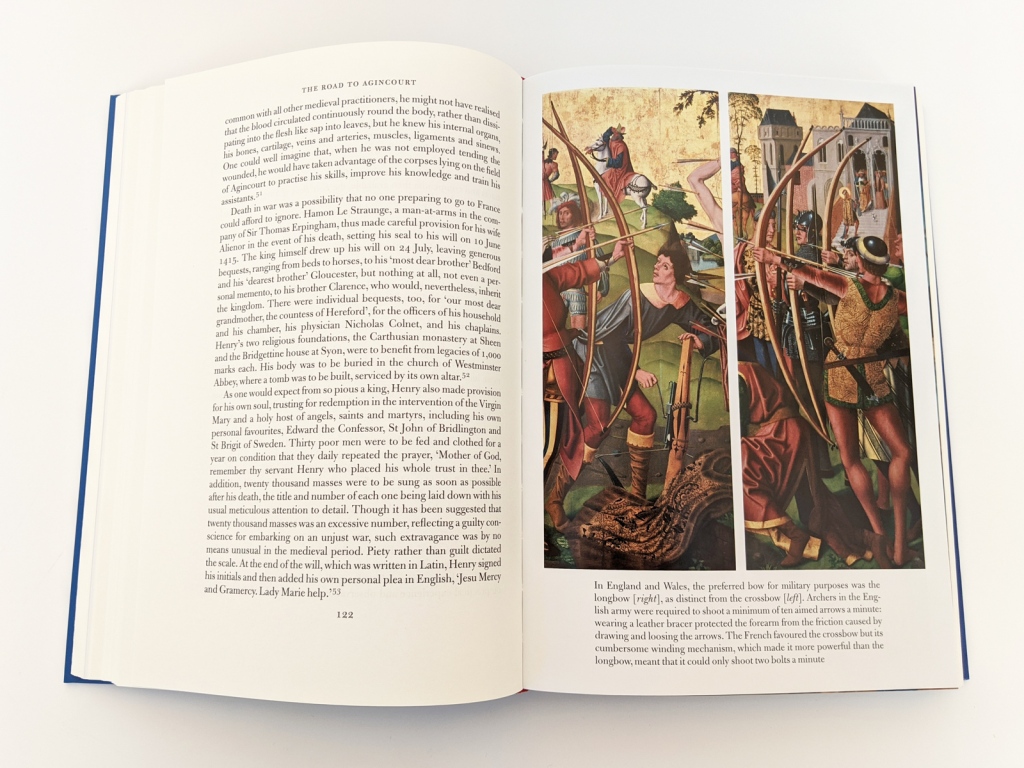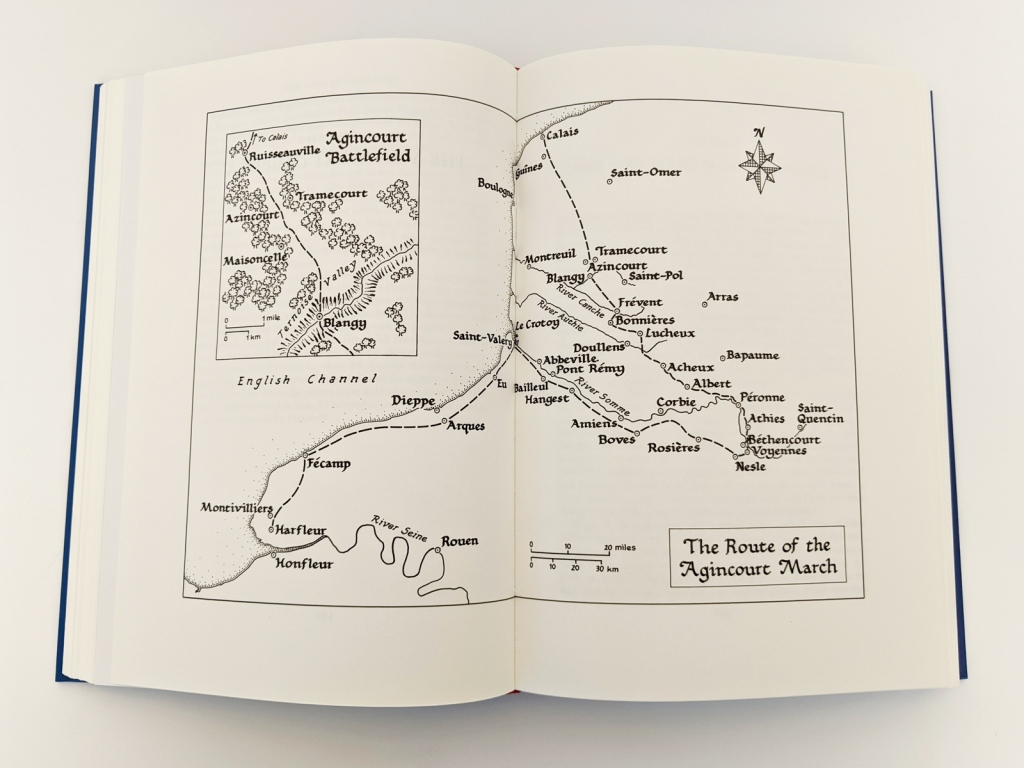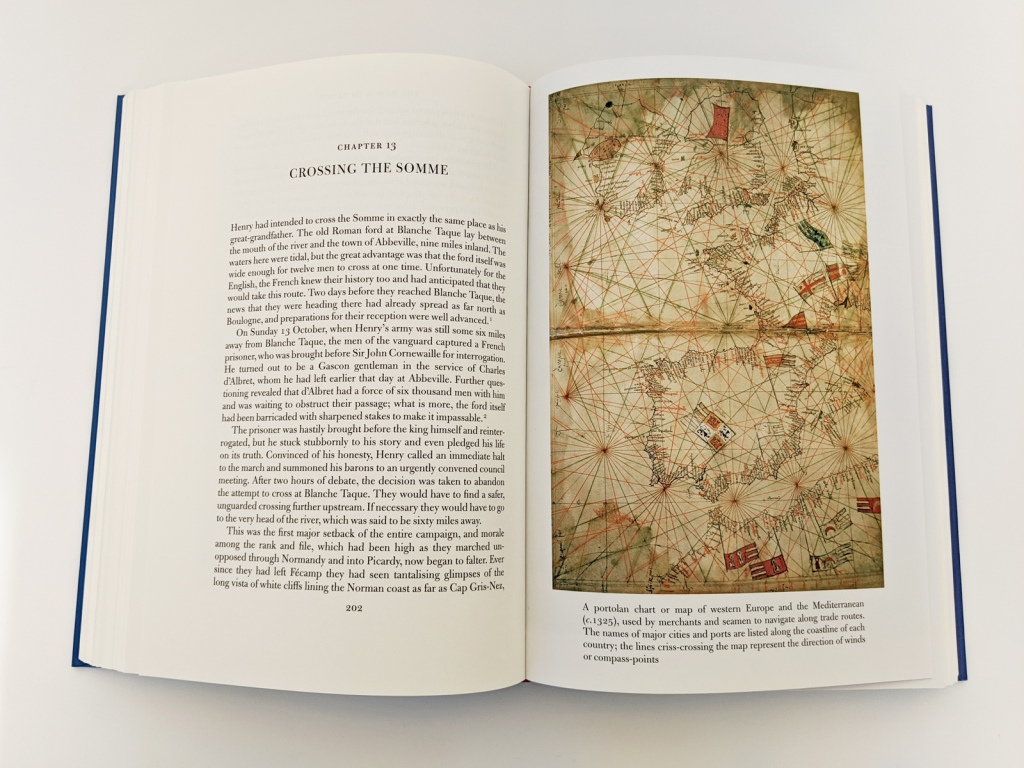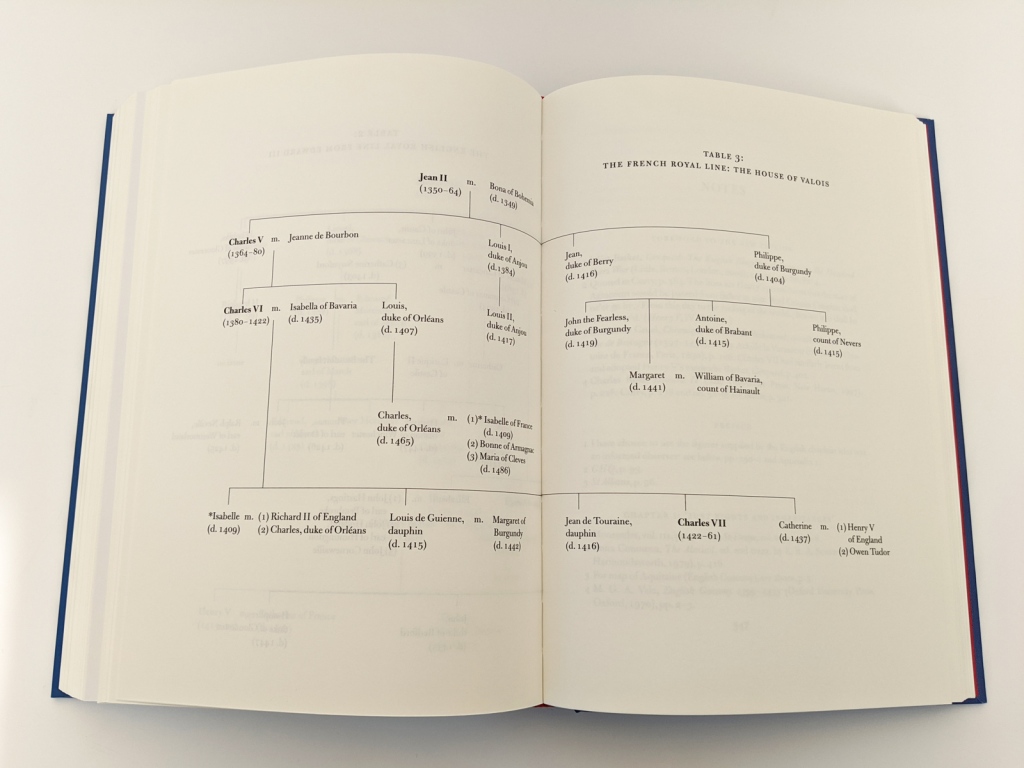A readable history of the campaign—and ultimate English victory—immortalised in Shakespeare’s Henry V.
Folio Society; 2015; xxxv, 438pp; 8to (255x180x45mm); 1.3kg; three quarter bound in blocked blue cloth with printed paper front board; in plain blue slipcase; colour illustrations and black and white charts throughout.
Agincourt: The King, The Campaign, The Battle is a 2005 work of popular history by Juliet Barker, published by the Folio Society in 2015. The volume is three-quarter bound in blue cloth, with a paper-covered front board. The cover is printed with a motif around the letter ‘A’ along with the figure of an English longbowman taken from an illustration in the St Albans Chronicle. The design is nice enough, although it’s hard not to wonder how spectacular it would have looked had it been blocked and embellished in gold. The spine is blocked in gold with the title, author’s name, a fleur-de-lis, an English heraldic lion passant, and the word “Folio”. The volume is presented in a plain blue slipcase that is perhaps a little thin relative to the size and weight of the book.
The text block is Smyth-sewn with red head and tail bands that nicely complement the blue binding. The effect is quite striking. Endpapers are also red. The text is typeset in Bulmer and printed on Abbey Wove paper. There are 438 pages, the last one hundred of which are notes, bibliographic, and indexing material. The introduction is by Bernard Cornwell, author of the historical novel Azincourt, while the book proper is divided into three parts.
The first part details the immediate run-up to the Agincourt campaign, including the underlying dynastic politics, failed attempts as diplomacy, and the logistical task of assembling an army. The second part is concerned with the campaign itself: the siege of Harfleur, the march to Calais, the battle, and the return from France. Finally, part three examines the aftermath: deaths, celebrations, and the spoils of war. The battle of Agincourt itself fits into just one of the book’s eighteen chapters, but the rest of the material helps to provide a rich contextual picture. The account is eminently readable and moves at a pleasingly brisk pace.
As well as carrying along the narrative, the book is of course also laced with interesting historical facts and anecdotes. My favourite was the account of mining—a siege tactic in which the besieging army would attempt to dig under a town’s defences to cause them to collapse. To prevent this, the defenders would dig their own tunnels to cause the attackers’ mines to collapse. When two such tunnels met, men-at-arms would race to duel each other because entering combat in such difficult underground conditions was viewed as the height of chivalric honour.
Accompanying the text are a frontispiece and 32 pages of colour plates. These are mostly photographic reproductions of historical manuscripts, paintings, and monuments documenting the events of the book, grouped into a few bundles. They are printed on heavy gloss photographic paper and are vibrant and clear. There are also maps and genealogical charts—the latter being quite necessary given the somewhat complex lines of succession under dispute here. ■
Where to buy
* denotes an affiliate link

